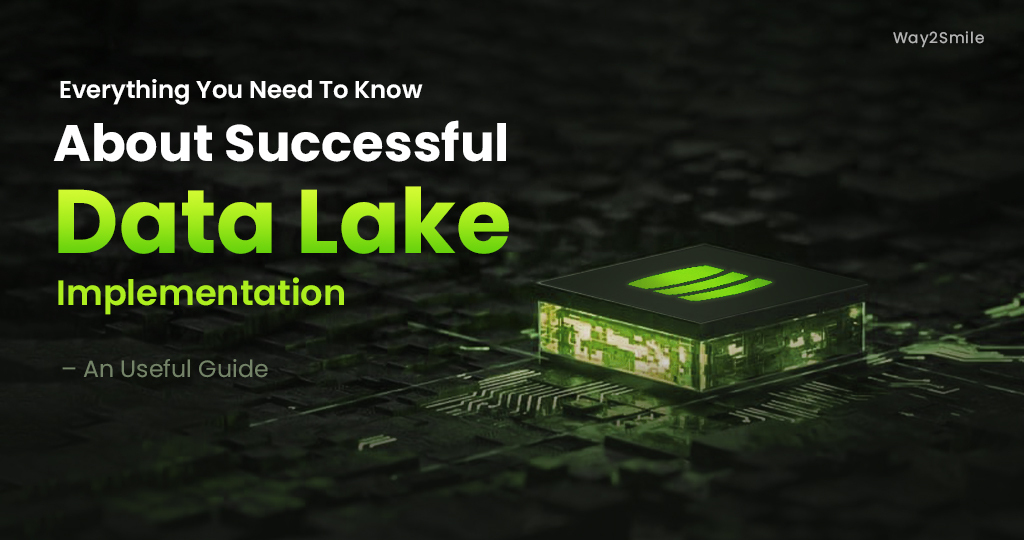In this 21st century, data is diversifying and growing. Experts have provided evidence that a particular company gets to see its data grow within a rate that exceeds only 50% every year. For such reasons, many companies believe that the traditional techniques to managing information have become old-school. Data analytics companies have adopted some of the best practices to make the whole data leveraging smoother. All the organizations out there are looking for brand-new ways to organize all the data accordingly easily. Through this article, you will get the chance to deep dive to understand what Data Lake is and what it has in-store.
Data Lake: A Brief Introduction
Data Lake is described as a storage receptacle that can store a massive amount of unstructured, structured, and semi-structured data. It stands out as a place where you can easily store all data types within its native format with no fixed limits on the file or account size.
Data Lake delivers high data quantity, which will allow you to increase the native integration and analytic performance. Apart from that, it's viewed as a massive container similar to big rivers and lakes. Just like the lake has many offshoots coming in, a data lake carries machine-to-machine, structured data, logs, and unstructured data flowing through it in real-time. On the other hand, data lake democratizes the data and stands out as a cost-effective way to store all your data.
You can use the stored-up data for later processing. Professional research analysts can focus on finding all the meaningful patterns within data but not data itself.
Reasons To Opt For Data Lake
The primary goal of a data lake is to provide an unrefined view of data to all the data scientists out there. But there are several other reasons why businesses or companies must opt for a data lake. Please check the information below!
- There is no presence of data within the silo assembly. So, data lakes provide a 360-degree view of the customers and make all the analyses more robust.
- With start storage engines, such as Hadoop, storing all the incongruent information has become more accessible. You don't have to model data into a company-wise schema with a data lake.
- You can use artificial intelligence and machine learning to make profitable predictions.
- The increase in metadata, data quality, and data volume also increases the rate of analysis.
- A data lake provides all businesses with agility.
- It delivers a competing advantage to the implementing company or organization.
Exploring The Data Lake Architecture
Here, you will discover the data lake structure and adequately understand each block in detail. Let's check them out!
- The Data Sources
Data Lake has a data source where all the various data types get fed within the data lake. These data sources can be unstructured data like Big Data and social media and structured data as a relational database.
- Batch Data Processing
In many cases, the data that gets ingested by the data lake is not viewed as real-time. This means that most of the data present within the data lake is in batch format. Real-time data frameworks, such as the Lambda architectures, are utilized since they can easily take care of the stream processing right before it gets placed within the data lake.
- Data Ingestion
The Data Lake is not just one single repository where the data gets placed without cleaning or processing. There is a lot of processing done to make the data stay in the correct shape before it gets shifted to the following pipeline. Within most of the data lakes, the data that gets ingested are standardized, which improves the performance within the area of data performance right from raw to curated.
Even when the raw data gets sorted in its native form, you must always go for the format that fits perfectly for cleansing. On the other hand, data cleansing is highly essential. Doing so will enable a better structure to conduct analysis. The data also gets transformed into consumable and proper data sets and stored within tablets or files.
- The Data Storage
Data storage has the power to store all types of data, which includes unstructured and structured data, social media, log files, medical scans, real-time data, pictures, and many more. This allows the data storage to correlate all the various kinds of data. The central theme is that the businesses are shifting towards modern tools, such as Cassandra and Hadoop, for storage-related purposes. Even though the Hadoop technology is pretty standard in all the data lakes, it doesn't reflect the architecture. You must identify that a particular data lake must reflect on the architecture, approach, and strategy, not the technology.
- Data Analysis
Data lakes give birth to numerous functions within a company, for instance, business analysts, data scientists, data engineers, and data developers. Data lake allows these professionals to gain proper access to all the data with their choice of frameworks and tools. This includes all the open-source frameworks, such as Apache Spark, Hadoop, and various other commercial offerings. It enables analytics, such as data analysis, machine learning, data validation, etc., to be performed without shifting the data from separate or different storage.
- Applications And Reporting
A modern-type data lake works perfectly with BI or Business Intelligence like Apache Superset, Tableau, and Metabase. It also helps in preparing the data for analysis to create dashboards and reports. Microservices can play an essential part here because they will help with the maintenance, development, and deployment of a data lake, and it is a lot more agile and flexible. The essence, connected directly with the data lake, allows it to run various independent services for applications through one data source.
Final Thoughts
Data Lakes have become extremely crucial in this modern world. It accepts all data sources, stands out as a scalable system, and has immediate and iterative access to raw data in the native form. It also creates a unique platform where you can apply a structure in numerous datasets within the same source.







